The Search for Old ShanghaiPrepared by Harold Stephens
Travel Correspondent for Thai Airways International
A book titled CHINA LIVING by English writer Sharon Leece caught my attention. I thumbed through the pages and couldn’t believe what I was seeing—a modern, unexpected China. Old memories stick with us and my vision of China is one of the past. Even when I travel to China today I always seem to be looking for the past. This book for me was a snap to reality. The China that I once knew and loved, the one that most of us picture in our minds, is rapidly changing. No, I have to go a step further. The China that I knew, the pre-1949 China, no longer exists. When I opened Ms. Leece’s book and began to read I realized I was living in the past. When I studied the splendid photographs throughout the book, I knew then that China had become a different place. Where on earth, I wondered, did she get the photos? In Shanghai, where I met the authoress, I soon learned where she found the places she had written about and had photographed. And where was that? Everywhere in China. Even in the tiniest village. In Sharon’s own words:
“Chinese style, long considered staid and traditional, is moving rapidly in a new and innovative direction. The pioneering spirit of a new China is manifesting itself in cutting edge design and architecture as an insatiable appetite for creative new directions leads designers to infuse their work with a fresh vision. The traditional aesthetic values of elegance, subtlety and proportion are still evident—but modern materials and techniques now form the cornerstones of new design movements.”
From us old diehards it comes as harsh reality. China is changing. I went to Shanghai to attend Sharon’s book launching, but at the same time I wanted to see how much of Old Shanghai that I once knew still exists. One place I wanted to explore was Blood Alley. As a young, 18-year-old US Marine, it was a street frequented by sailors from warships in the harbour flying the flags of a dozen nations. I wrote about that street in my book TAKE CHINA, THE LAST OF THE CHINA MARINES. Compare this past to what I found today.
“Outside in the street,” I wrote, “we caught two pedicabs. (I was with a fellow Marine and this was my first visit to Blood Alley.) We didn’t have to tell the drivers twice where to go. They knew, like the old mare on the farm back home that knew where the stable was. The moment we turned up Avenue Edward VII on to Avenue Rue Chu Pao-san, the official name for Blood Alley, the scene changed. It wasn’t a gradual change; it was like an explosion. Even when I had an idea what was coming, it was still a jolt. Those thousands of Marines who came before me hadn’t lied. Blood Alley was in a class all its own. We had hardly turned down the block when we were met—no, besieged—by gangs of pimps, panhandlers, conmen offering to serve as guides and who knows what else, all wanting to sell something, or else wanting to buy what you had to sell. And there they were, the fun houses—dives, brothels, cabarets, cafes, side by side with fancy eateries and the lowest of low bars, all with swinging doors—a thoroughfare entirely dedicated to wine, women, song and all-night lechery.
“Swinging doors were left open. From the cabarets, music blared out into the street, a cacophony of off-key saxophones and strident trumpets thumping out the hits of the day. We paid off our pedicab drivers, who demanded more money than agreed to, and ducked into the first bar we came to— Monk’s Brass Rail. Inside, standing shoulder to shoulder, were US Marines with leather belts slung over their shoulders ready for action, gaunt US Navy men from the Seventh Fleet, kilted Seaforth Highlanders, seamen from the Liverpool tramps, French with their silly-looking tams, Savoia Grenadiers, and the half casts of Shanghai’s underworld. Customers were in every stage of drunkenness, from “feeling good” to staggering blindness. Monk’s Brass Rail was like a time bomb, ready to explode at a slight side-glance. You could rest assured, any minute a drunken sailor would ask a Seaforth Highlander what he had under his kilt, and it would begin.”
In TAKE CHINA, I named all the bars we went to: George’s Bar, Monk’s Brass Rail, Crystal, the New Ritz, Mums, Palais Cabaret plus a few more. Each bar we entered seemed wilder, noisier and better than the last one. And it was the same in every bar, painted Chinese beauties in ankle-length dresses slit up the sides, sat on stools at the bar, calling out to us when we entered: “Dar-ling, buy me one drink, pleeease.”
Now a half a century later I wanted to find Blood Alley. The first obstacle was the name, Avenue Edward VII that led to Avenue Rue Chu Pao-san. All the names in Shanghai in those days were European. It was the Opium Wars that had changed Shanghai. The Opium Wars erupted and China lost out to the West. The British imposed the Treaty of Nanking in 1842 that paved the way for the opening of Shanghai to the world. A British gunboat sailed up the Huangpu, hoisted the British flag and declared Shanghai a free port. The official languages became English, French, German and Russian, but not Chinese.
From an old map I discovered that Blood Alley is Xikou Road today, and it's not even a shadow of its former self. Not one single vestige of the past remains. The street is far shorter than I remembered, and with its glass and concrete buildings, it’s dull and boring. It’s onvious, China cleaned up its vice when the People’s Republic took over in 1949.
I then had to go to the old city. But first I wanted to walk along the Bund, the promenade along the Huangpu River. It was here on the promenade along the riverfront that foreigners from the “Foreign Quarters” and legations once gathered.
Nor was Huangpu River what I remembered. Before, pulling at their anchors midstream, were warships and gunboats, river scows, coastal steamers, oil tankers, rusted freighters, smart cruise liners, huge sea-going junks and, as I recall, even an African dhow. There were still more: Chinese lighters with painted eyes, white-hulled government launches with shiny brass rails and hundreds of more vessels. And sculling back and forth, from ship to shore, was a sea of tiny sampans and bumboats carrying passengers and cargo. Some bumboats were so heavy-laden with cargo that their freeboard was but centimetres above their waterline and it appeared that the slightest wave might swamp them and send them to the bottom.
All along the waterfront cargo vessels, moored to the docks, loaded and unloaded their wares, while whizzing cranes swung their booms back and forth overhead, and sweating coolies trotted up and down narrow gangplanks with loads heavy enough to break the backs of ordinary men. The entire waterfront was pulsating with vigor.
Now I found tourists with cameras and guidebooks in hand. Smart young Chinese in Nike shoes and brand-labeled clothes sauntered up and down the Bund, while out in the river polished cruise boats and tourist ferries scurried up and down the river. No men-of-war, shattered junks and rusted freighters. And across the river, in an area they call Pudong, the posh Shangri-la Hotel stands side-by-side with the Space Needle.
Now, when I returned, I was not disappointed with the Old City. It hasn’t lost its magic. Before 1949, the Old City remained under Chinese law while the rest of Shanghai was carved up by foreign powers. Most of the residents in these old back alleys were from the Chinese underworld. The place was a notorious gangster-and-opium slum. We were warned to keep out of the Old City but that didn’t stop us.
I was surprised now when I visited the city. The tiny lanes and crowded streets are still there, minus the rickshaws—but what a difference. The vices are gone and the neighborhood looks like a Hollywood movie set. The same buildings, the small houses, but what a little cleaning up and refurbishing had done.
One place in the Old City I wanted to visit was the Huxinting Teahouse, the city's oldest teahouse. I found it, unchanged. Situated in the middle of a small lake, it dates from the Qing dynasty. The second floor of the teahouse serves some of the best tea in town. I remembered leaving my boozing buddies at Blood Alley one evening and finding my way to the teahouse. Sitting at postage-stamp size tables were Chinese men in long robes (the standard dress), listening to sing-song ladies in white make-up doing the entertaining to tunes played on one-string violins and gongs. My buddies back at Blood Alley didn’t know what they were missing. Now, years later, while drinking my tea, I heard musicians congregate below, playing traditional Chinese music. I was taken back to those days. But the music wasn’t for me alone. I was told that the music was a nightly affair here at the Huxinting Teahouse.
Getting back to Author Sharon Leece and her new books, she does illustrate how old China blends with new China. Sharon does know her China. She was based in Hong Kong as Editor-in-Chief of ELLE DECORATION HONG KONG. She is also the author of two other books on Chinese design and architecture—CHINA STYLE and CHINA MODERN, both published by Periplus Editions.
Next week, since China is much in the news these days, I’d like to tell readers about the founder of new China, Sun Yat-sen. We will visit several of his places of residences in both Shanghai and Singapore.
QUESTIONS AND ANSWERS
Q. Dear Mr. Stephens, I am looking forward to your coming stories on China. I hope you will be telling about China as it is and not glossing over the facts. There are so many conflicting stories about China that I don’t know what to believe any more. —Hazel Copenfield, Pittsburgh, Pennsylvania.
A. Dear Ms. Copenfield, if you are looking for a political analysis of China, I’m sorry to disappoint you. I will leave that up to the political pundits, politicians and economists. I write stories about travel in hope to bring the world closer together. I like to write about the romance of travel. I want to point out to readers that we live in a very beautiful world and let’s take advantage of the world that we live in, and enjoy it. I found when I travelled through China, if I smiled, people would smile in return. —HS
Harold Stephens
Bangkok
E-mail: ROH Weekly Travel (booking@inet.co.th)
Note: The article is the personal view of the writer and does not necessarily reflect the view of Thai Airways International Public Company Limited. | 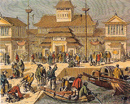
Old Shanghai as it was in 1847 | | 
The famous Bund in 1932, for foreigners only | | 
The Bund as it is today, for all to enjoy | | 
Proud women at a national ceremony | | 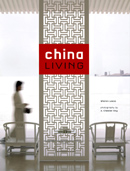
China Living, it changed my views of China | | 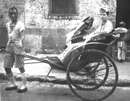
Jack Stephenson, a China Marine in 1946 | | 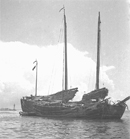
Sailing junks have completely vanished | | 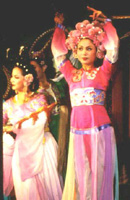
Sing-song cabaret girls, they have not gone | | 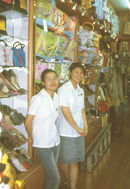
Sales girls the same everywhere | | 
The new Shanghai that rose up across the river | | 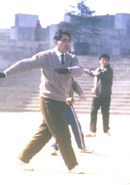
Chinese exercise every morning in the streets | | 
Tea house today, exactly as the author remembered
It | | 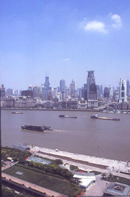
Shanghai is a modern city with the old tucked away | | 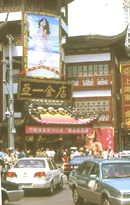
Cars have replaced rickshaws in the Old City | | 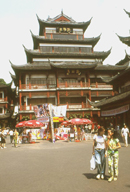
Some things don't change | | 
Shanghai at night all aglow | | 
Nor has this scene changed | | 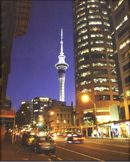
We have to admit, Shanghai is beautiful | | 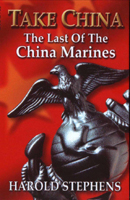
For more about Old Shanghai, read the author's
Take China | | 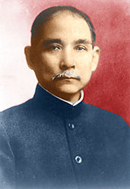
Next week we visits the various residents in Asia
of China's founder Sun Yat-sen |
|





